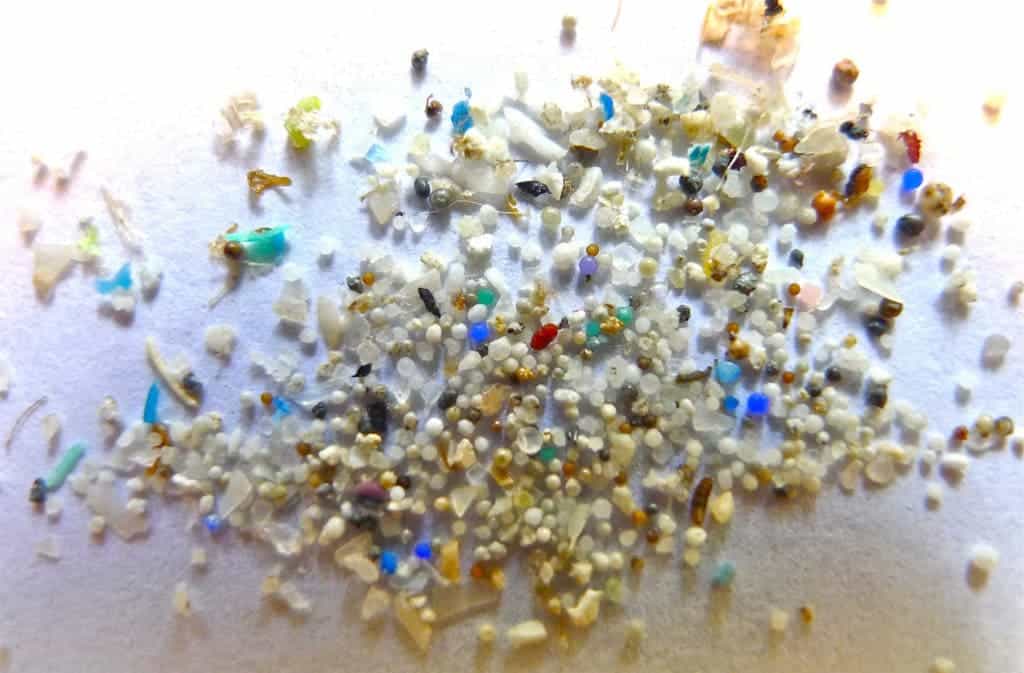
Austrian researchers have reported the first evidence that shows microplastics can be found in humans, after detecting them in human stools.
We made them, now we’re eating them
Microplastics are tiny plastic waste, ranging from 5 millimeters down to 100 nanometers in diameter. They’re found in surprisingly many products, particularly in beauty and cleaning products, but are also produced unintentionally through the wear and tear of plastic pollution. Since mass production of plastics began in the 1940s, microplastic contamination of the marine environment has been a growing problem — scientists estimate that about 2-5 % of all plastics produced thusly end up in the seas.
Ultimately, microplastics are absorbed by sea creatures and travel up the food chain where they reach humans. A portion of consumer-grade mussels in Europe could contain about 90 microplastic pieces, according to one study. Consumption can vary greatly between nations and generations, but it seems that avid mussel eaters might eat up to 11,000 microplastics a year. Microplastics have also been found in canned fish, and even in sea salt. One kilogram can contain over 600 microplastics, meaning if you consume the maximum daily intake of 5 grams of salt, that’s equivalent to ingesting three microplastic particles a day. Even mosquitoes ingest microplastics, which they move up the food chain after being eaten by other animals.
Considering the microplastic prevalence in the food chain (they’re found in tap water, for instance), it’s rather obvious that plastic — the stuff we made and then dumped — would make its way back to humans, in our guts. Now, researchers at the Medical University of Vienna and the Environment Agency Austria are the first to show hard evidence to support this idea.
The pilot study involved eight participants from across the world, including Finland, Italy, Japan, the Netherlands, Poland, Russia, the UK, and Austria. Stool samples from each person were tested for 10 types of plastics following a newly developed analytical procedure.
In the week preceding the stool sampling, each participant had to fill in a journal where they wrote what had eaten. All the participants consumed foods and beverages that were exposed to plastic, whether it was plastic wrapping or plastic bottles.
Researchers found that each and every one of the participants tested positive for the presence of microplastic and up to nine different plastic types were identified, including polypropylene (PP) and polyethylene-terephthalate (PET). On average, the researchers found 20 microplastic particles per 10 grams of stool.
“This is the first study of its kind and confirms what we have long suspected, that plastics ultimately reach the human gut. Of particular concern is what this means to us, and especially patients with gastrointestinal diseases. While the highest plastic concentrations in animal studies have been found in the gut, the smallest microplastic particles are capable of entering the blood stream, lymphatic system and may even reach the liver. Now that we have first evidence for microplastics inside humans, we need further research to understand what this means for human health,” lead researcher Dr. Philipp Schwabl said in a statement.
We might have to wait thousands of years before bacteria evolve the ability to decompose plastic at high scale. But we really can’t count on that — microplastics represent an important environmental problem right this instant. Major changes have to happen at both the industry and policy level if we want to minimize the amount of microplastic that ends up in the food chain. We’re the ones who made microplastic, so we naturally are also responsible for the damage to the environment that it causes.
Results were presented at the 26th United European Gastroenterology Week in Vienna and have not been peer-reviewed.
Was this helpful?



